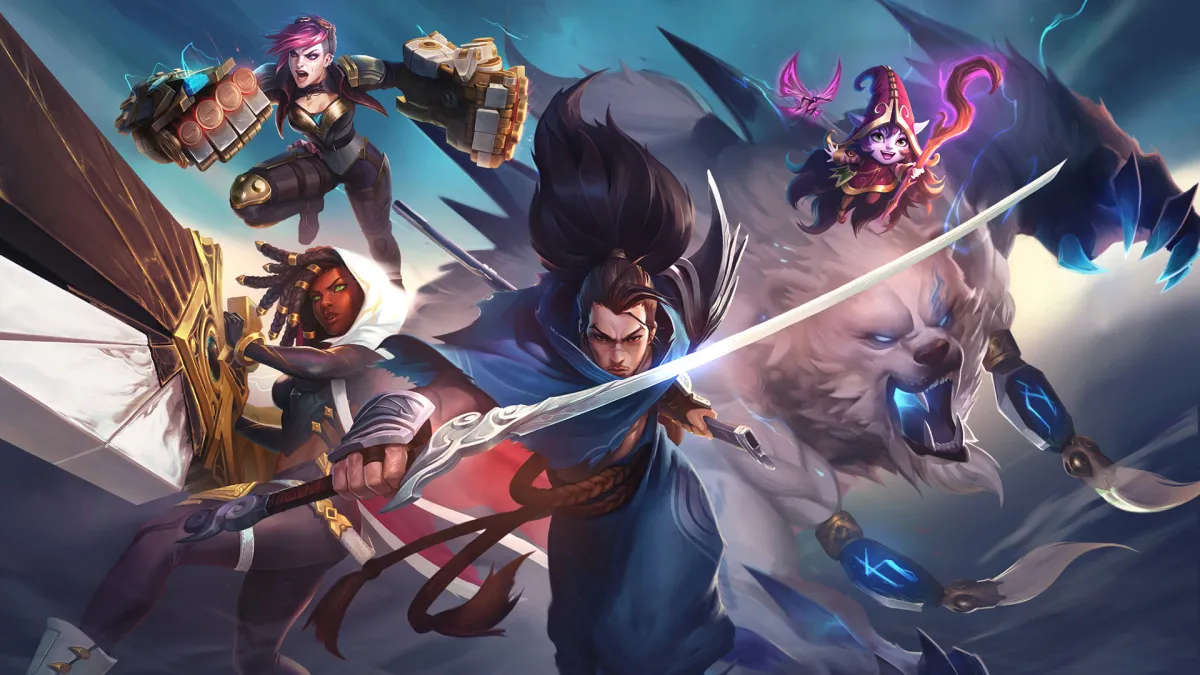Sitting in your chair at home, you accept the solo queue match. You’re last pick. “Guess I’ll be filling,” you mutter. The bans fly through quickly, and your teammates pick up the roles they want. You look at the enemy team comp: Hecarim top, Jarvan jungle, Zed mid, Graves ADC. Realizing your team hasn’t picked a top laner yet you see the perfect opportunity to pick Malphite: his attack speed slow will cripple everyone on the enemy team, and he can stack armor to become unkillable and add on to some of his damage. The pick up above you, however, called for top lane, so you defer to him out of courtesy. Instantly you regret this when he locks in Galio top—sure, the gargoyle’s ult will do wonders, but he’s won’t be able to build magic resist thus wasting his passive. Malphite’s armor stacking, on the other hand, would’ve crushed the competition.
This scenario illustrates the economic concept of opportunity cost within League of Legends. With over 100 champions to choose from for 10 players to use at a given time, there is a sacrifice one makes when picking one champion over another. We’ll explore what opportunity cost is and how we can apply it to both buying items in game and the pick/ban phase. This is important because by utilizing this principle, one can improve their choices in the pre-game lobby and on the rift, aiding them on the path to victory.
Opportunity Cost

(Image courtesy of apecon3.wikispaces.com)
The principle of opportunity cost is easy to both define and explain. The New Oxford American Dictionary describes opportunity cost as “the loss of potential gain from other alternatives when one alternative is chosen.” Basically, if you can only choose one particular option out of several, choosing one denies you the advantage of the other.
Say you’re hungry and you want to buy some food. You only have $5, which is enough to buy either a hamburger, a taco, or a bunch of snacks. Buying the snacks will let you eat over a long period of time, while the hamburger or the taco will fill you. However, say the hamburger requires you to sit down and eat at the restaurant while you can take the taco on the go. You can only choose one of these options because you can only buy one, and each come with their own benefits and drawbacks. That is opportunity cost explained through food—now let’s look at League of Legends.
The Cost of Items
Since the word “cost” is heavily associated with prices, we can start looking at the choices we make in the item shop and explore the opportunities we buy into. Say you’re an ADC in the bottom lane and you back with 1600 gold. With that money, you can either buy a BF Sword to maximize your trading power and a pot, or you can pick boots, a pickaxe, and some pots to get a smaller increase to your trading and extra move speed to help dodge skill shots. How you invest the gold determines what playstyle you are choosing to pursue.
Let’s look at a mid-game example with the ADC. Say you’re ahead in bottom lane, but the enemy mid is a fed Zed. You have your first core item completed and you have 1550 gold when you base. Zed has killed you in a team fight, showing that he is going to be focusing you. Do you buy the core item in your build or immediately purchase a QSS so you can cleanse his ult off you? Continuing your build will boost your damage, allowing you to carry the fights, but if Zed can kill you instantly then you won’t be doing anything. Meanwhile, the QSS will be able to prevent Zed from popping you, but you’re sacrificing damage potential for survivability. Which do you choose? Finding the best answer in these scenarios is key to success, and being able to adapt game by game is a mark of a great player. But where else does opportunity cost apply in League of Legends?
The Theory of the Meta

(Image courtesy of notentirelyunstable.com)
The reasoning behind which champion to pick and where to play them is the most impactful case of opportunity cost in League of legends. To refer back to my anecdote in the first paragraph, by choosing to pick Galio top instead of Malphite removed the chance to use Malphite top in that situation. Whenever one chooses to play a particular champion for a role, you give up the choice to pick a different champion. Sometimes that can be a drawback, like in the Galio example, but other times it may not matter. Reverse the situation to where someone is thinking of playing Galio, but instead locks in Malphite to play against that heavy AD composition. Sure, you can’t play Galio meaning you miss out on the ultimate, but now you have Malphite—a champion who takes advantage of stacking armor—to play against the enemy composition. Even though you sacrifice the opportunity to play Galio, it’s a cost you can take because of the gain from picking Malphite in that scenario.
This reasoning also extends to playing champions in specific roles. Let’s take a look at Hecarim in the season 5 meta. Hecarim was designed as a jungler and was originally played there, but with changes to the jungle in season 5, Hecarim started to be used top lane. It worked for him: he had a lot of great match-ups and he has an easier time snowballing with a solo lane’s and experience than from the jungle. Now, one can still play Hecarim jungle, but if you choose to do so you give up the ability to take him into top lane where you can get more farm to get your items. Additionally, by taking Hecarim jungle, you forfeit the chance to play another champion in the jungle that currently does better than him. If Gragas, for example, is open to pick for the jungle and you choose Hecarim instead, then you can’t use Gragas.
Finding the ideal champion for each scenario is the philosophy which shapes the meta. Within League of Legends, champions are designed to fulfill a certain role in a unique fashion—both Vayne and Lucian fill the role of marksmen, but you play them differently. Identifying the best pick for a given scenario or understanding what is currently the best all-around picks are can minimize the opportunity cost you occur when you make a decision. The professionals choose to minimize the risk and costs of their picks as much as they can: that’s why we typically see them pick a few select champions rather than picking any champion. It’s why they pick or ban overpowered champions (think Alistar at Season 4 worlds). They want to give themselves the best possible chance to win and minimize the cost they incur by making a choice.
Conclusion
There is a price to every choice you make in League of Legends. When one decides to build a particular item, you are trying to play in a manner which will utilize the item effectively. Likewise, when deliberating between champions to play one will forfeit the opportunity to use one over another when they make their final choice. To minimize the sacrifice of these choices, it is impertinent to analyze the situation and determine which decision will mean the least amount of cost incurred. That is opportunity cost in League of Legends.
Thanks for reading this guys! This will be a weekly series from me so if you want to keep up, follow me on twitter @CD_Mangaka. Be sure to watch the accompanying Youtube video at the start and if you like the content, subscribe to the channel for more analysis content. I’ll see you around.






Published: May 5, 2015 10:00 am